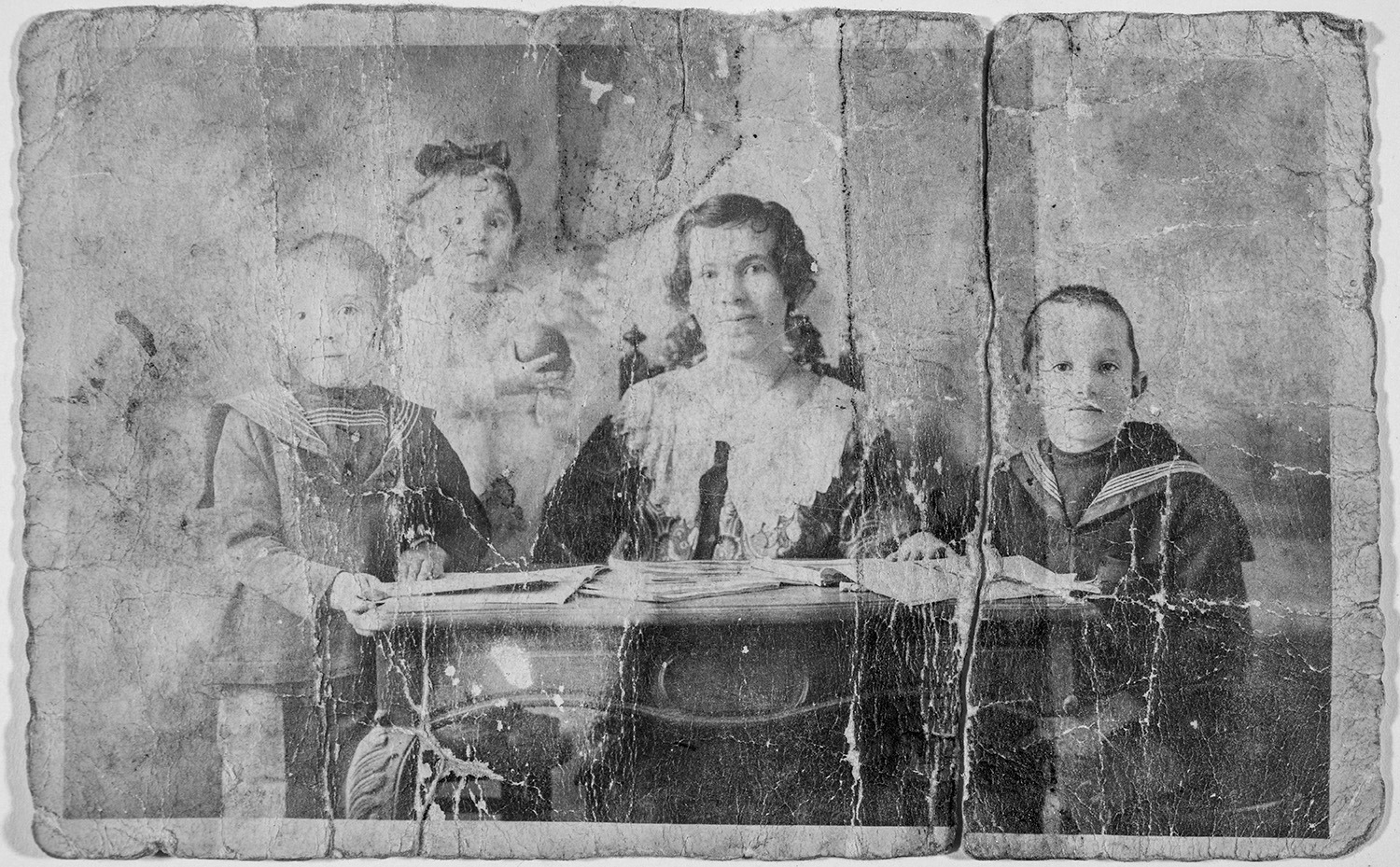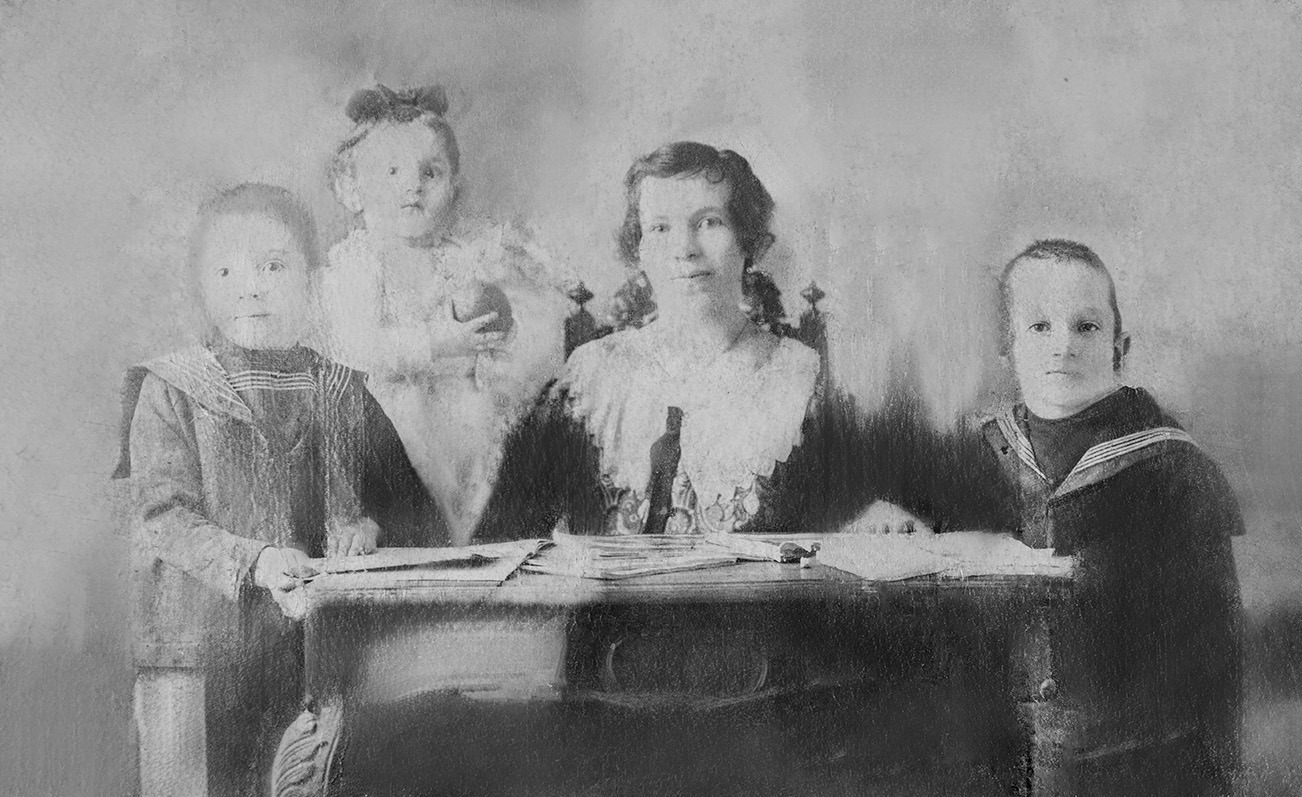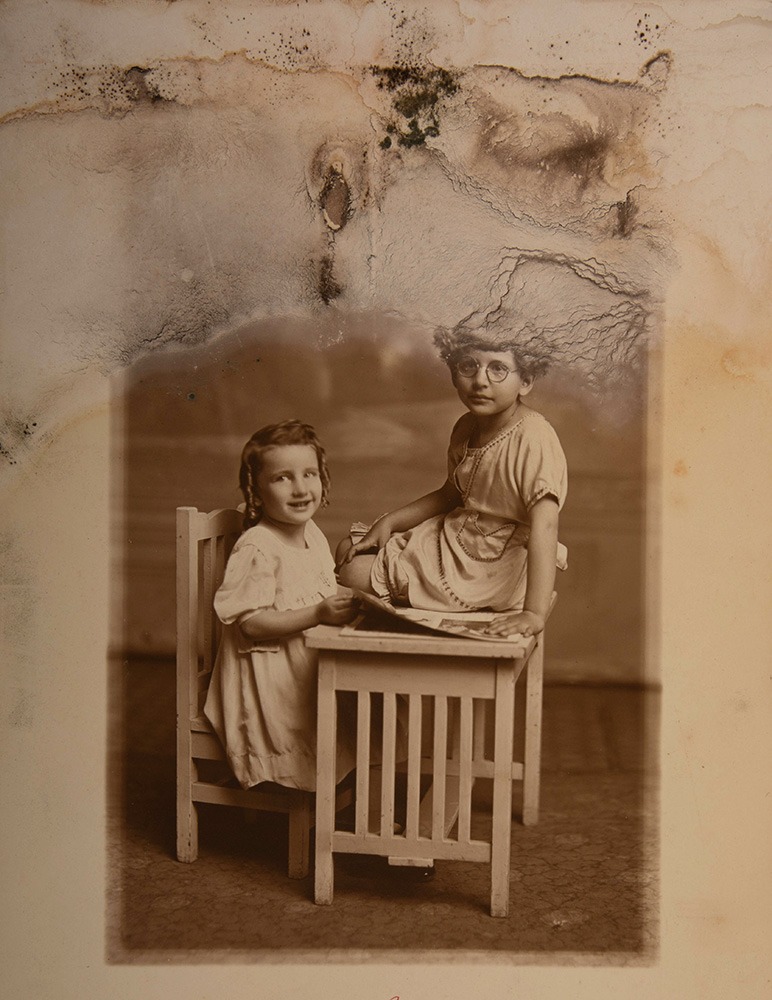Over the past couple of years, I have been working on restoring images that have been damaged due to being torn, faded, or water-damaged. However, with the help of the latest technological tools, including AI, I have been able to extract details from these images that were previously thought to be impossible to save. Here are three remarkable examples of such restorations.

Number 1: Where’s the image?
My client brought an image, in a frame with other family photos, and asked me if I could restore it. It depicted him in his high school baseball uniform, in the 1960s, in front of his house. He had to explain that, because I could barely see it.
The image had been hanging in his mother’s living room for around 50 years. It was so faded, that after studying it for a minute, I asked him: “Is this a color photo?” When he answered in the affirmative, I quizzed him: what was the color of his uniform? Were the bricks on the house behind him tan or red? Was this shot in early or late summer? Based on this information, I gradually rebuilt the image.
The first step was to make a high-quality copy the image, and I had to do so by shooting through the glass. Then, using Photoshop, I boosted the contrast to revive details. This worked well, but it also exaggerated all of the pieces of dust and imperfections, an unavoidable consequence of boosting contrast. For the next step, I had to carefully remove each blemish, discoloration, and dust particle. This process took me nearly an hour.
The image was looking better, but his face was a bit smudged, and crucial detail was still hard to attain. That’s when I deployed an AI-based tool to restore his face. It managed to accurately revive the missing details in seconds!

Once I had a clean image, I rebuilt the colors. The client was blown away. Total time spent on the image: 2 hours. Cost: $120.
Also read: Why color prints degrade faster than B&W Prints.
Number 2: Healing a Broken Family

This photo, taken in the early 1920s, was abused and torn. Not only were two parts of it completely separated, but someone taped it together, leaving a discolored residue. It was also faded and blotchy. It needed a lot of work.
After increasing the contrast (which, as above, caused more imperfections to become visible), I stitched together the three pieces and removed the torn areas, creases, and discolored sections. Then I went to work removing the spots, smaller dings and imperfections in the surface of the print. I gradually rebuilt hidden or missing details as best I could. Finally, I used AI-based face restoration to complete the job.

Total time spent on the image: 2 1/2 hours. Cost: $150.
Number 3: Mind Blown. Hair Fixed

Most of this image was in good shape—except for the upper portion, which was apparently either water or fire damaged, or both. First, I restored the background, using Photoshop’s Generative Fill tool. Photoshop automatically filled the background in a way that merged well with what was already there. This would have taken me at least an hour without this tool; with Generative Fill, it took me less than a minute.
I also used Generative Fill to replace the girl’s missing hair. I chose the best option then used some “old-school” copy tools to add more hair and give the top of her head a better shape.

Total time spent on image: 15 minutes. Cost: $25.
These are just three examples of photos I’ve recently restored. Do you have a damaged, precious memory that you want restored? Email me with the details and I’ll give you a free estimate.
Can AI be over-used? Sure it can! Here’s an embarrasing example.